The project grew from tap-for-vocabulary word to play Pong, act as Magic 8 ball, and react to air-punches. Once you have an accelerometer, might as well use all of it. You can see the interactions on the YouTube video.
On tap, the ring shows a vocabulary word. On tap or double tap, it next shows definition.
On double tap, it starts Pong game, the paddle position set by tilt of accelerometer.
On an upside-down shake, the ring says to consider a question, waits for another shake to give a response. On air-punch (or shake), Wordy puts up a punch word (BIFF, Pow!) and a couple rectangles for emphasis.
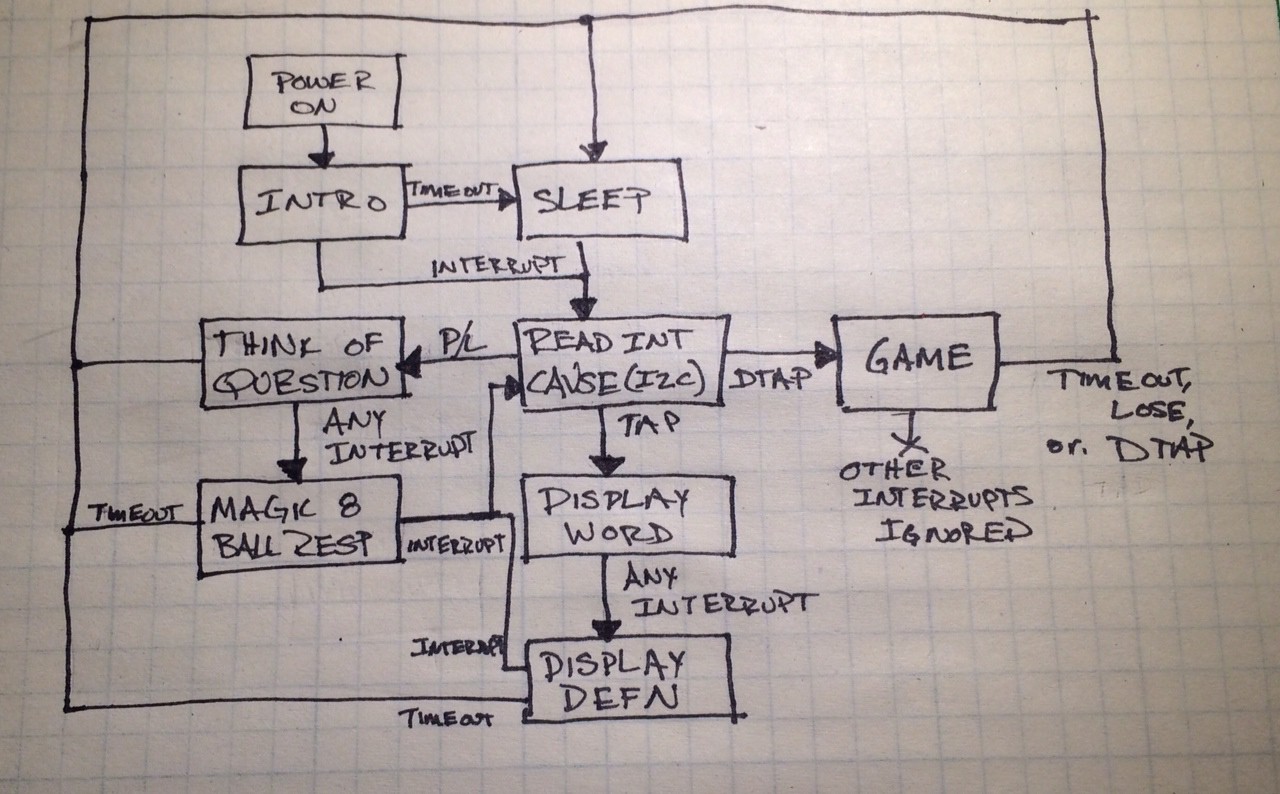
 Elecia White
Elecia White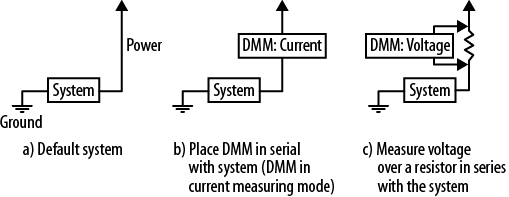
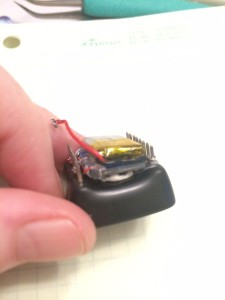



 This whole time, I was trying to put the ring on my right hand ring finger. That is where the the MicroView "fits":
This whole time, I was trying to put the ring on my right hand ring finger. That is where the the MicroView "fits":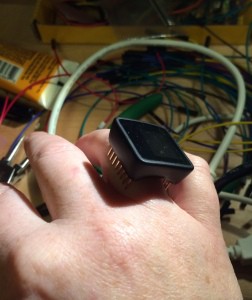 However, Pong is really, really hard to play from that angle. Also, after wearing the assembled one for 3-4 hours, I found it itched a bit. I think that was battery edges scraping into my skin.
However, Pong is really, really hard to play from that angle. Also, after wearing the assembled one for 3-4 hours, I found it itched a bit. I think that was battery edges scraping into my skin.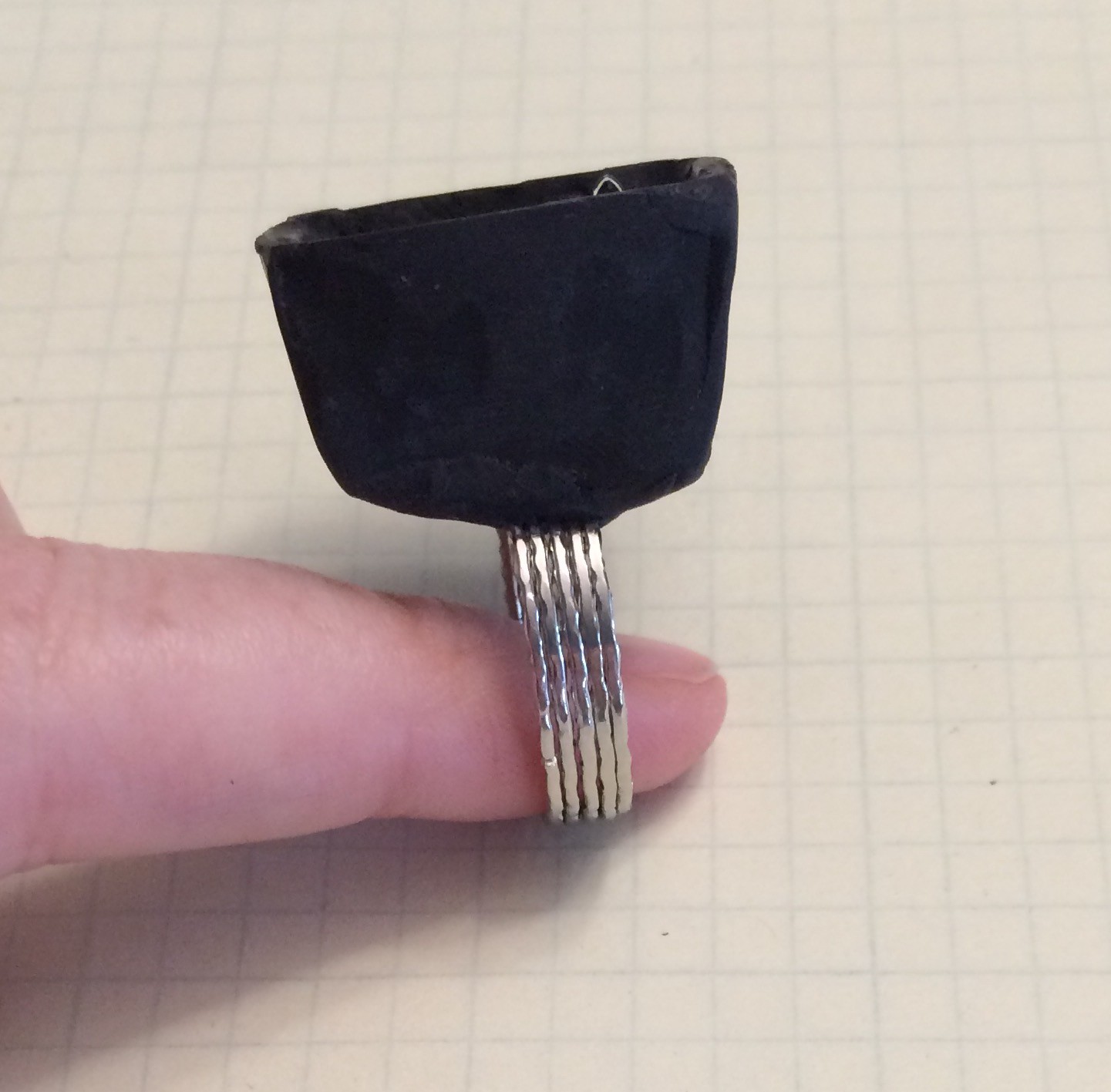
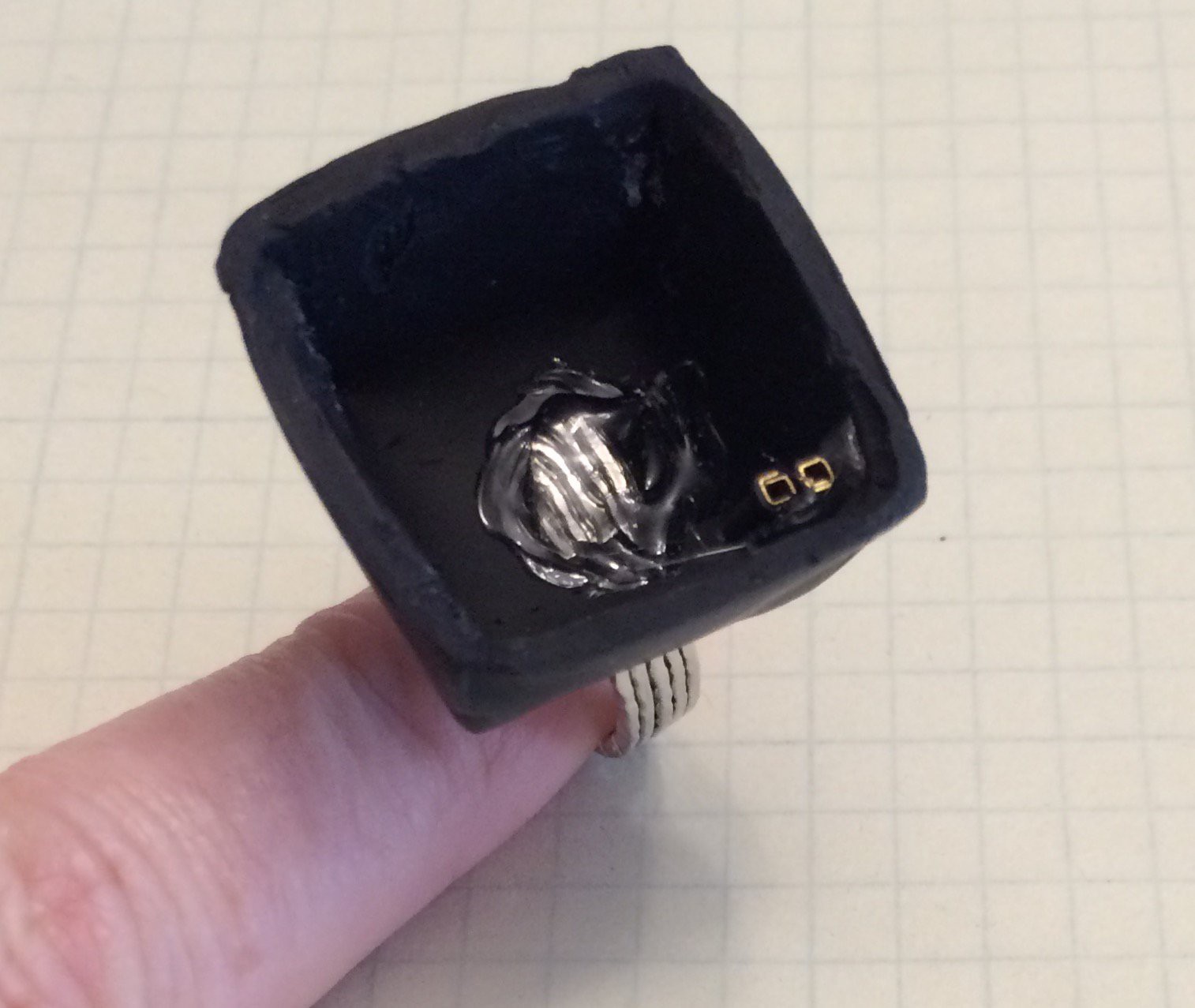
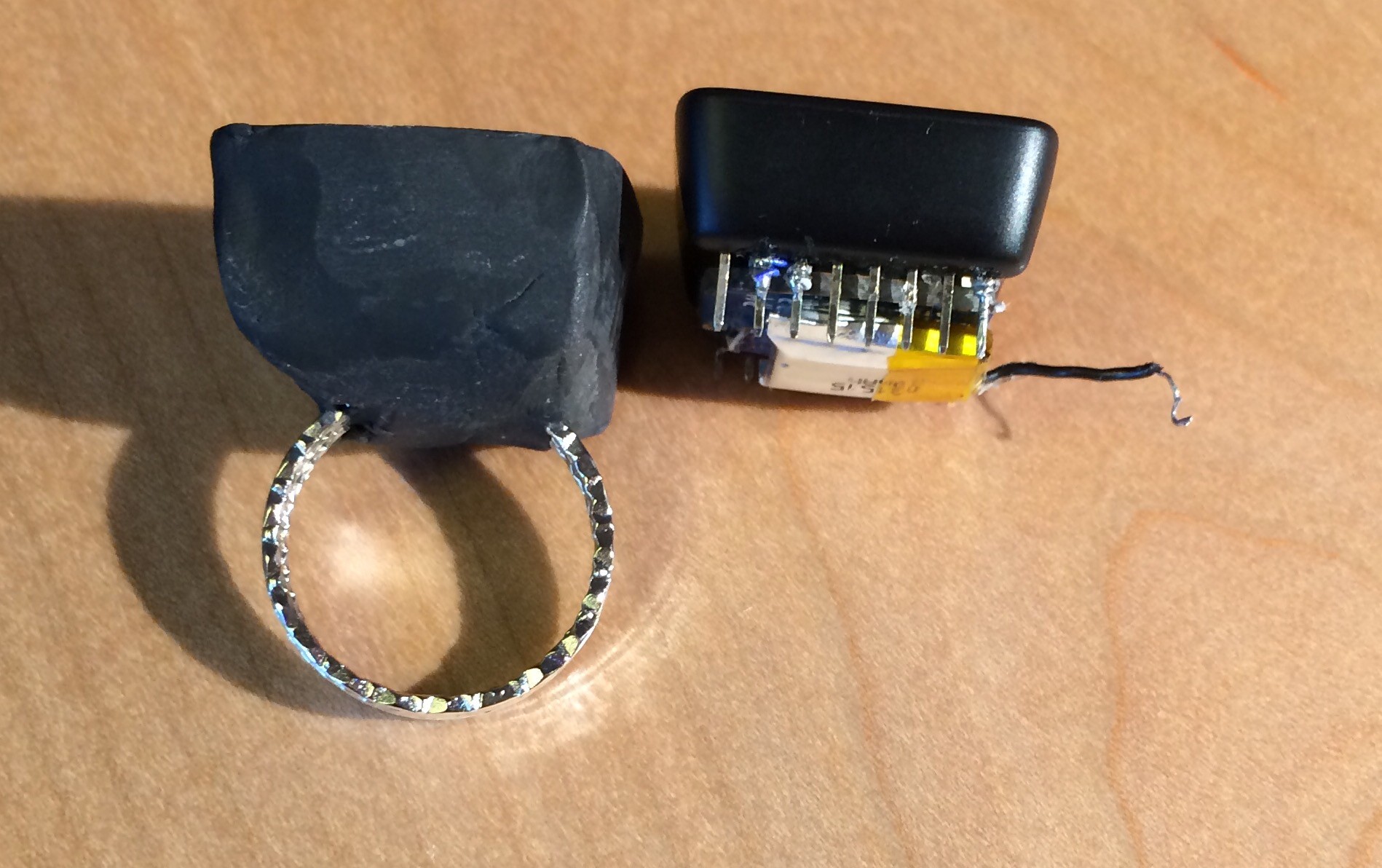
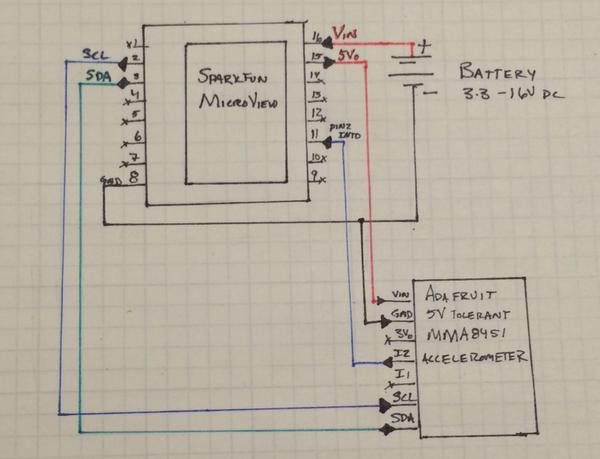



I am working on a project that uses the same hardware. I wired up the mma8451 (without the I2 line) and got the mma sending out the informaiton I was looking for over usb. but if I issue a uView.begin(); it mess up the serial communication and screen doesn't work. So I found your project and downloaded the code and added the I2 to D3 wire and tried to compile. It returns a 'class MicroView' has no member named 'end' error. Any ideas of what I'm doing wrong? Thank you.